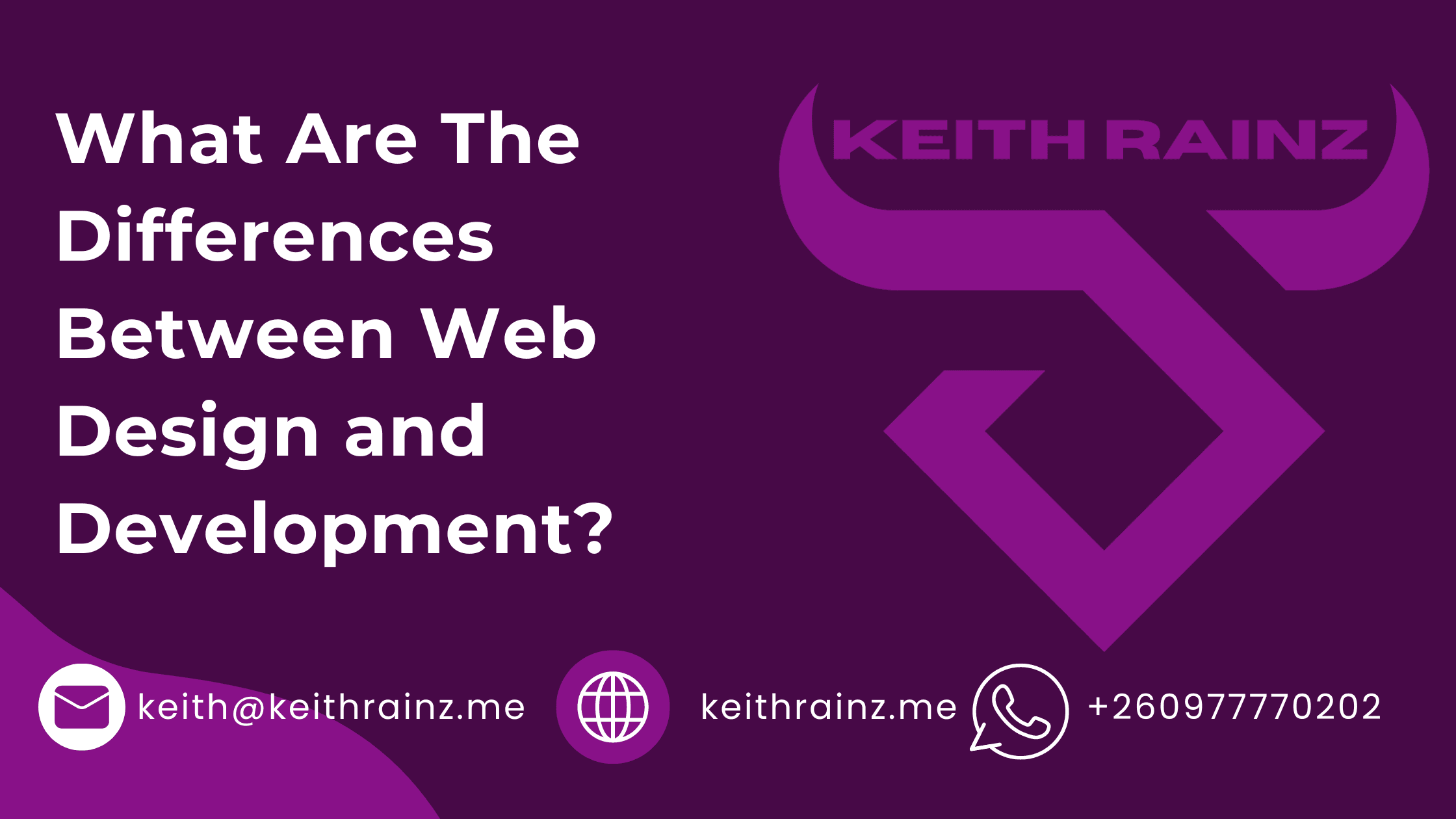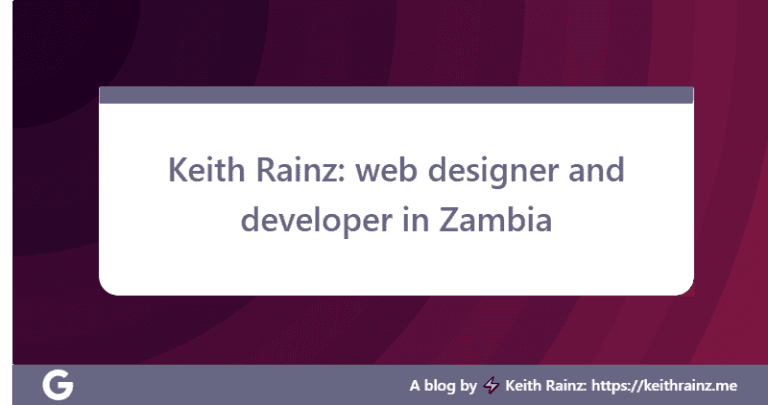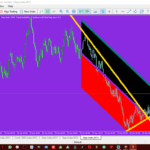You’ll frequently come across the words “web design” and “web development” when reading about how to construct websites. These two terms are readily confused since individuals appear to use them interchangeably, leading you to wonder what the difference between web design and development is.
While the phrases “design” and “development” are sometimes used interchangeably when discussing website creation, they are truly two distinct domains of expertise.
Understanding what each one implies and how it works (in a broad sense) might help you decide whether to hire someone to build your site or become active in the industry yourself.
We’ll go through both web design and development in this piece, covering how they vary and how they’re linked. Let’s get started!
A basic introduction to web design and development
First and foremost, we should emphasize that the phrases “design” and “development” have distinct connotations in the context of website development, and they are not always employed appropriately. You’ll be able to talk more successfully about your site if you understand the difference. It will also make it easier to recognize when they are being misused.
Let’s begin with some fundamental definitions. In order to set together a website, there are two basic activities that must be completed. They are as follows:
Development: This refers to the process of constructing the website’s architecture – utilizing code to create a functional site and ensure that everything is running properly. That is the most important factor to remember: web developers are primarily concerned with converting an existing design into suitable code.
Web design, on the other hand, is concerned with determining the appearance of a website as well as how people will interact with it. Designers may use coding (along with a variety of other tools), but they are primarily concerned with aesthetics, layout, and usability.
If you’re acquainted with WordPress, you’ll recognize this as the distinction between plugins and themes. Both of these adjustments have a huge impact on your website. However, whereas plugins (developers) provide features and functionality, themes (designers) change the appearance and feel. This is a simplified approach, but it might assist you in rapidly grasping the important contrasts.
What is the relationship between web design and development?
In order to get a website off the ground, both web design and development work are required. These aren’t two separate domains of employment; they’re inextricably linked. This is one of the main reasons why they get mixed up so frequently.
In reality, the two principles are so wide that how they interact to produce a website might vary depending on personal preferences and requirements. However, the most basic procedure for creating a website is as follows:
- Gathering and planning information
This is when the person (or team) building the website collects information from the customer on what the final product should include. Then they begin to map out the breadth of the location. This covers the characteristics it must have, the primary sections or pages it must have, and other fundamentals. - Conceptualization
The majority of design effort occurs before development. The style, structure, and other aspects of the website are planned out, either on paper or in the form of a rudimentary mock-up. The customer will then either approve or request revisions to the design. The former is far more prevalent, which is one of the reasons why this phase occurs first. It’s a lot easier to modify the appearance or functionality of a mock-up than it is to rewrite a website that has already been coded. - Expansion
The developer(s) can go to work after a strong mock-up or prototype is in place. They create the website itself, either from the ground up or utilizing a framework to help them get started. They frequently start by laying out the site’s fundamental structure. Then, when needed, they’ll add certain features and capabilities. - Evaluation
Websites are complicated, and there are certain to be a few things that didn’t turn out quite right over the first three stages. This is why, in most cases, a testing step is required. It’s critical for completing the project and ensuring that everything is in functioning order.
This procedure is, once again, quite adaptable. A small, straightforward site may not have as many procedures, but a large e-commerce enterprise may require a more thorough strategy to guarantee that nothing goes wrong. This should, however, give you a sense of how web design and development are related.
What does all of this imply for you?
All of this information may seem a little hazy at this point. Understanding the differences between web design and development, on the other hand, may be beneficial in a variety of ways. Let’s take a look at two of the most plausible uses.
- Hiring someone to assist you in the creation of a website
First and foremost, knowing what it takes to design a website is important if you want someone else to do it for you. Going into an interview with no idea what to anticipate might lead to hiring the incorrect individuals or failing to explain your needs effectively.
If you want to outsource your website, you’ll need to first figure out how many workers you’ll need. After all, some people specialize in either web design or web programming, while others do both. There are advantages and disadvantages to employing a single freelancer or a specialized team:
It is far less expensive to hire a combined developer/designer, and you won’t have to worry about communication breakdowns between various persons working on the site. This is a decent strategy for little sites or those that don’t require a lot of functionality. However, the adage “jack of all crafts, master of none” holds some reality. A single individual may lack the abilities required to develop an aesthetically attractive and functionally complicated website.
Bringing on at least one developer and one designer is more expensive, but it ensures that you have experts on all sides of the process. Each will be able to devote all of their effort to perfecting one facet of the final product. In this case, communication may be more difficult, but the problem may be alleviated by finding a business that employs both developers and designers. This is the most expensive choice, but it has the best chance of getting you the precise spot you desire.
- Getting your hands dirty in the business
What if, on the other hand, you don’t want to employ but instead want to try your hand at web design? The choice you’ll have to make should be obvious by now. Should you concentrate on web design or web development?
In the end, you’ll be able to learn both. However, your best chance is to start with the one that most matches your interests and abilities. Web design is likely the road for you if you’re a creative and visually-focused person with a sense of style. Development, on the other hand, is the way to go if you’re technically inclined and enjoy messing with a website’s core code.
last thoughts
It should come as no surprise that building a website is a difficult process. What you may not understand is that it’s a multi-stage process that necessitates at least two separate skill sets.
Understanding the difference between web design and development will come in useful whether you’re having a website developed or thinking about doing it yourself. Just keep in mind that there’s a lot of overlap, and some individuals do both. Furthermore, if the final aim is an appealing, highly functional site, the two must operate well together.
Do you have any web design or development questions that we haven’t addressed yet?
Please share your thoughts in the comments box below!





